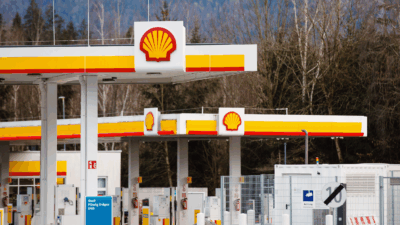
Sign up for smart news, insights, and analysis on the biggest financial stories of the day.
It turns out the real thirst trap is AI.
Thames Water, London’s water utility, told Bloomberg it’s looking at ways to restrict water supply to data centers at times of high demand. And that’s in the UK, which is a) very rainy and b) surrounded by ocean — in more drought-prone countries, the demands of ever-thirstier data centers could lead to major clashes with locals, as detailed in a second Bloomberg report.
Waterworld
Data centers use water to cool the semiconductors that whirr inside them. It’s tough to get a precise read on exactly how much water the average data center uses, but it’s highly likely that the commercial adoption of generative AI will up their usage. “More sophisticated algorithms such as generative AI systems need large-scale databases and computer power to be trained and developed,” Dr. Ana Valdivia, an AI expert at the Oxford Internet Institute, told The Daily Upside. Just training Chat-GPT3 used 700,000 liters (185,000 gallons) of water according to a research paper published in April by the University of California, Riverside, and the University of Texas, Arlington.
The generative AI boom is less than a year old, but already Thames Water wants to wean London data centers off water at times of heightened need:
- “Whilst we are looking at physical methods to reduce water use, including introducing flow restrictions on pipes, we prefer to take a collaborative approach with data centers, including encouraging them to explore water reuse and recycling options on-site,” John Hernon, strategic development manager at Thames Water, told Bloomberg.
- Some locals in a small town in Spain are protesting the building of a new data center for Meta, which the company predicts it will use 195 liters per second (51.5 gallons) at peak periods. “People are not aware of the amount of water that goes into watching a kitten meme,” Aurora Gómez, a spokesperson for the resistance group, told Bloomberg.
It’s not just in Spain that tensions are rising, as Dr. Valdivia said conflicts with locals have also arisen in Chile and the Netherlands.
Mango Hard or Go Home: The immediate effects of climate change are becoming apparent in Mediterranean fruit salads. Southern Italy now produces three times the number of mangoes, avocados, and bananas than it did five years ago, according to The Wall Street Journal. A guide told this reporter in Taormina last October that the one tropical fruit Sicilian farmers refuse to grow is pineapple, lest someone try putting it on a pizza.











